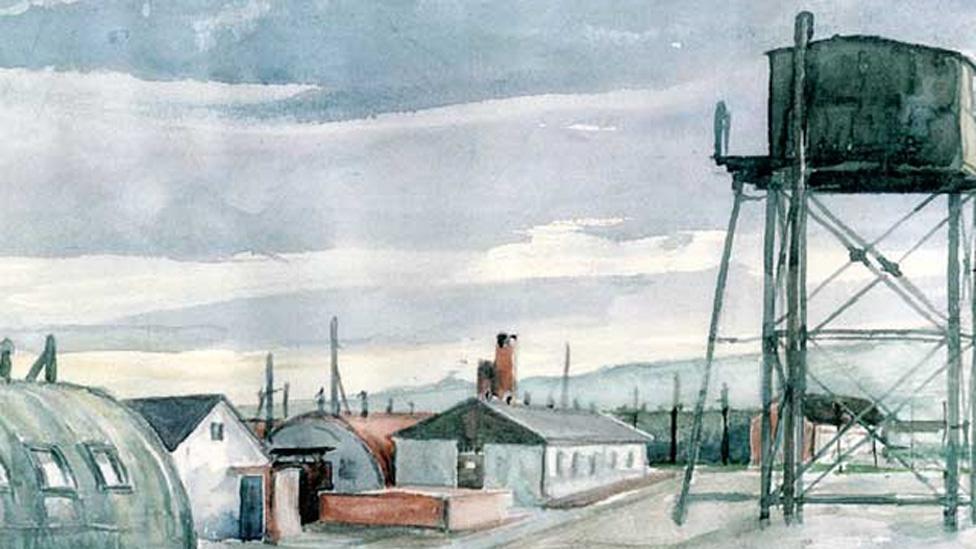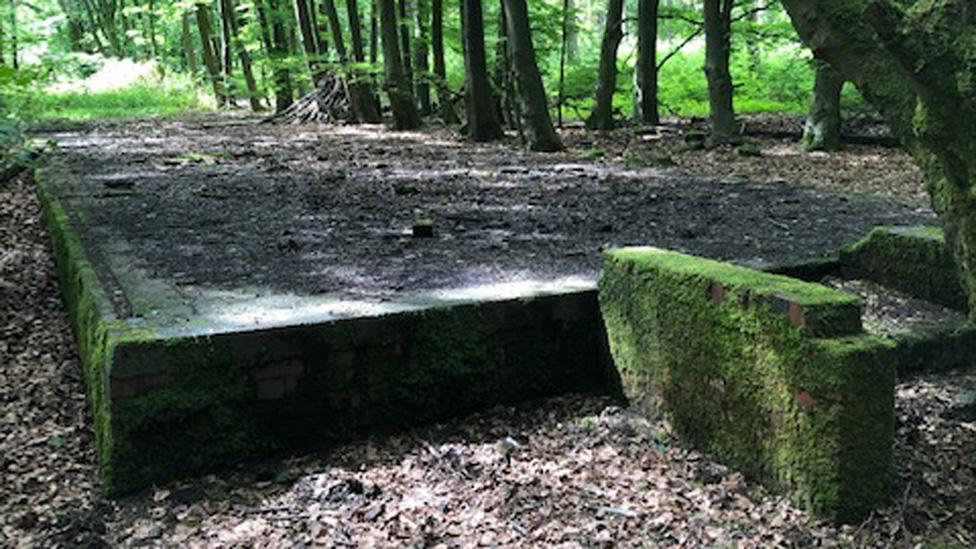Lodge Moor: Dig reveals 'everyday life' at UK's largest prisoner of war camp
- Published

More than 200 volunteers took part in the dig
An archaeological dig at the site of Britain's biggest prisoner of war camp has revealed clues about what life was like for those forced to call it home.
The dig at Lodge Moor camp just outside Sheffield has unearthed evidence of "little gardens" outside the prisoners' huts, which would have housed 64 men.
Evidence of a heated shower block along with money tokens and a paint pot was also found.
Volunteers said the dig had offered an insight into everyday life in the camp.
The Lodge Moor camp, which held more than 11,000 prisoners during World War Two, was abandoned after the war and woodland slowly covered the site, leaving just the foundations of some of the buildings visible.
The dig at the site, first excavated by archaeology students in 2019, involved more than 200 volunteers.

Evidence of a heated shower block was discovered
Alex Sotheran, from the Sheffield Lakeside Partnership, said: "We are looking at the archaeological remains of the hut bases themselves just to try and explore them and see if there were any archaeological features we could identify like internal walls - that kind of thing.
"We've found little gardens that the prisoners had made at either end of the hut bases and we've also found a German 'dog tag' with the soldier's unit on it, but it hasn't got a name."

He said a little paint pot from Windsor and Newton was also found.
"We know that some of the prisoners were painting water colours of the camp during their time here so it's fantastic that we've found the evidence that they were doing it," he said.
"It gives us a good idea of the everyday life at the camp", he added.

Money tokens were unearthed during the dig
The dig also uncovered evidence of money tokens.
Lead archaeologist Rebecca Hunt said: "Prisoners we don't think had access to actual currency so they were given tokens in lieu of real money.
"We think they were commonly used on the bus when they were allowed on day release," she said.

The camp, seen in an artist's impression, was closed in the late 1940s
As well as being used during World War Two the camp saw service during World War One.
One of its most famous inmates was German admiral Karl Doenitz. He was taken prisoner in 1918 when a submarine under his command was captured.
Doenitz spent around six weeks at the Sheffield camp, during which he plotted his escape by feigning mental illness to avoid being tried as a war criminal.
He later became a senior officer in Nazi Germany and became president of the country after Hitler committed suicide in 1945.

Follow BBC Yorkshire on Facebook, external, Twitter, external and Instagram, external. Send your story ideas to yorkslincs.news@bbc.co.uk, external
Related topics
- Published29 April 2021

- Published4 July 2019

- Published15 March 2015
